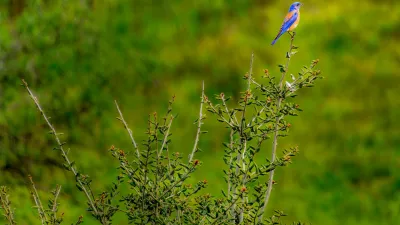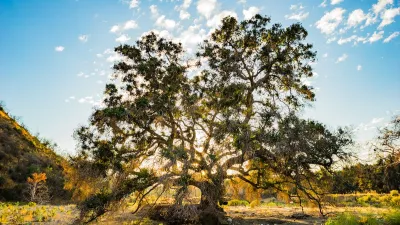Louis Sagahun explores the unexpected benefits of trading 5,000 square feet of grass and pavement for native plants at a Los Angeles elementary school.
Located deep in the concrete jungle just west of Downtown Los Angeles, Leo Politi Elementary School has witnessed a transformation in student learning and engagement. Like so many inner-city schools, it suffered from low test scores and a dreary landscape – that is, until a grant from the U.S. Fish and Wildlife Service brought a natural habitat onto the schoolyard.
After crews tore up 5,000 square feet of blacktop and replaced it with native flora, bugs shortly followed. After bugs came birds, and after birds came children. Marveled by the natural processes taking place on the playground, the children found a real-life experience against which to anchor their scientific curiosity, leading the school to an astronomical improvement on test scores in science.
Whereas three years ago, only one in eleven students tested "proficient" in science (and none ranked "advanced"), now more than half perform at those levels.
"Questions about why some birds flocked to one plant and not another led to discussions about soil composition and water cycles, weather patterns and seasons, avian migration and the tilt of the Earth in its orbit around the sun," said principal Brad Rumble.
And as lead arts and humanities teacher Robert Jeffers explains, the benefits extend beyond scientific understanding. The habitat has "instilled a profound sense of responsibility and awareness of nature," Jeffers said. "Now these kids can tell the difference between a crow and a raven, which requires cognitive skills of understanding subtleties and nuances important throughout life."
FULL STORY: At an urban L.A. school, nature grows — and test scores too

Planetizen Federal Action Tracker
A weekly monitor of how Trump’s orders and actions are impacting planners and planning in America.

Chicago’s Ghost Rails
Just beneath the surface of the modern city lie the remnants of its expansive early 20th-century streetcar system.

San Antonio and Austin are Fusing Into one Massive Megaregion
The region spanning the two central Texas cities is growing fast, posing challenges for local infrastructure and water supplies.

Since Zion's Shuttles Went Electric “The Smog is Gone”
Visitors to Zion National Park can enjoy the canyon via the nation’s first fully electric park shuttle system.

Trump Distributing DOT Safety Funds at 1/10 Rate of Biden
Funds for Safe Streets and other transportation safety and equity programs are being held up by administrative reviews and conflicts with the Trump administration’s priorities.

German Cities Subsidize Taxis for Women Amid Wave of Violence
Free or low-cost taxi rides can help women navigate cities more safely, but critics say the programs don't address the root causes of violence against women.
Urban Design for Planners 1: Software Tools
This six-course series explores essential urban design concepts using open source software and equips planners with the tools they need to participate fully in the urban design process.
Planning for Universal Design
Learn the tools for implementing Universal Design in planning regulations.
planning NEXT
Appalachian Highlands Housing Partners
Mpact (founded as Rail~Volution)
City of Camden Redevelopment Agency
City of Astoria
City of Portland
City of Laramie





























